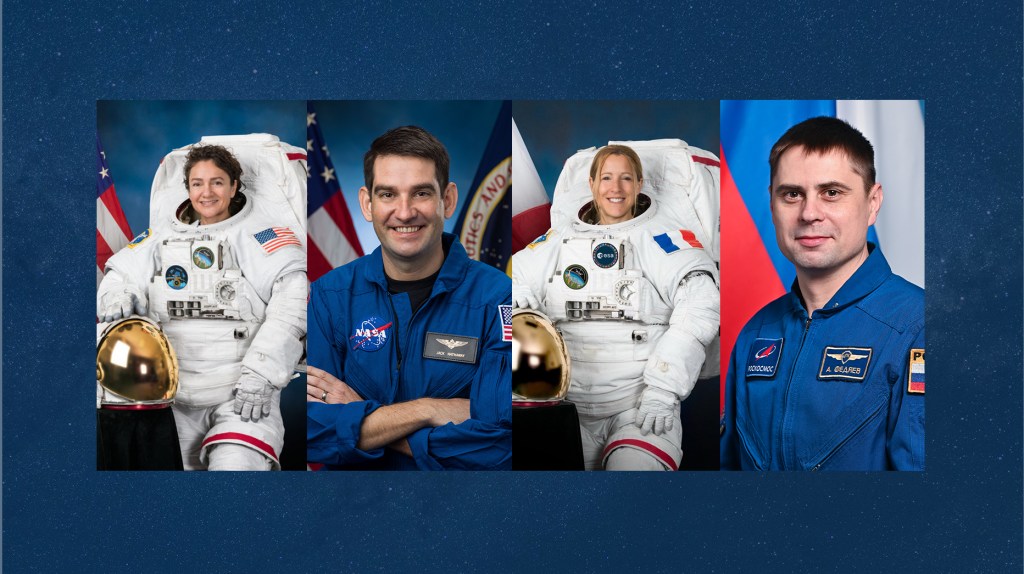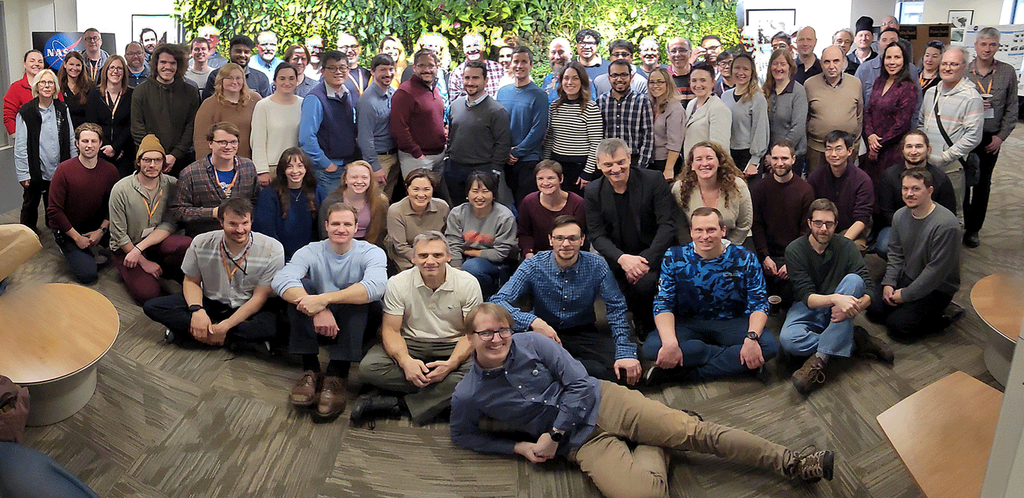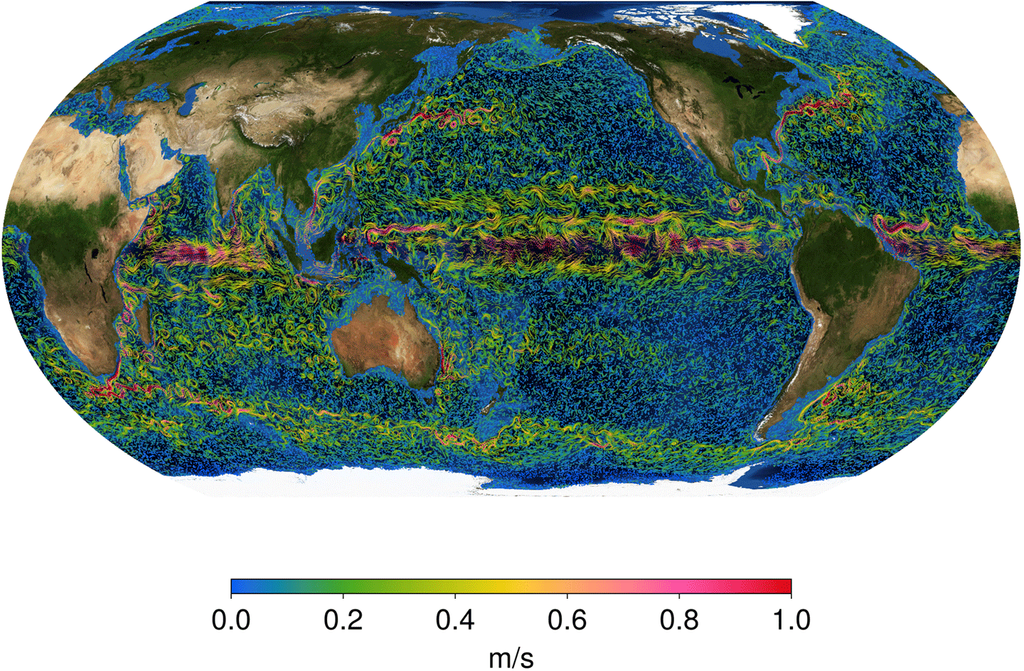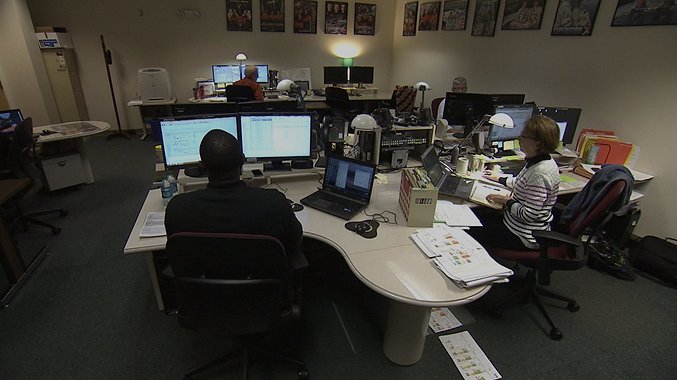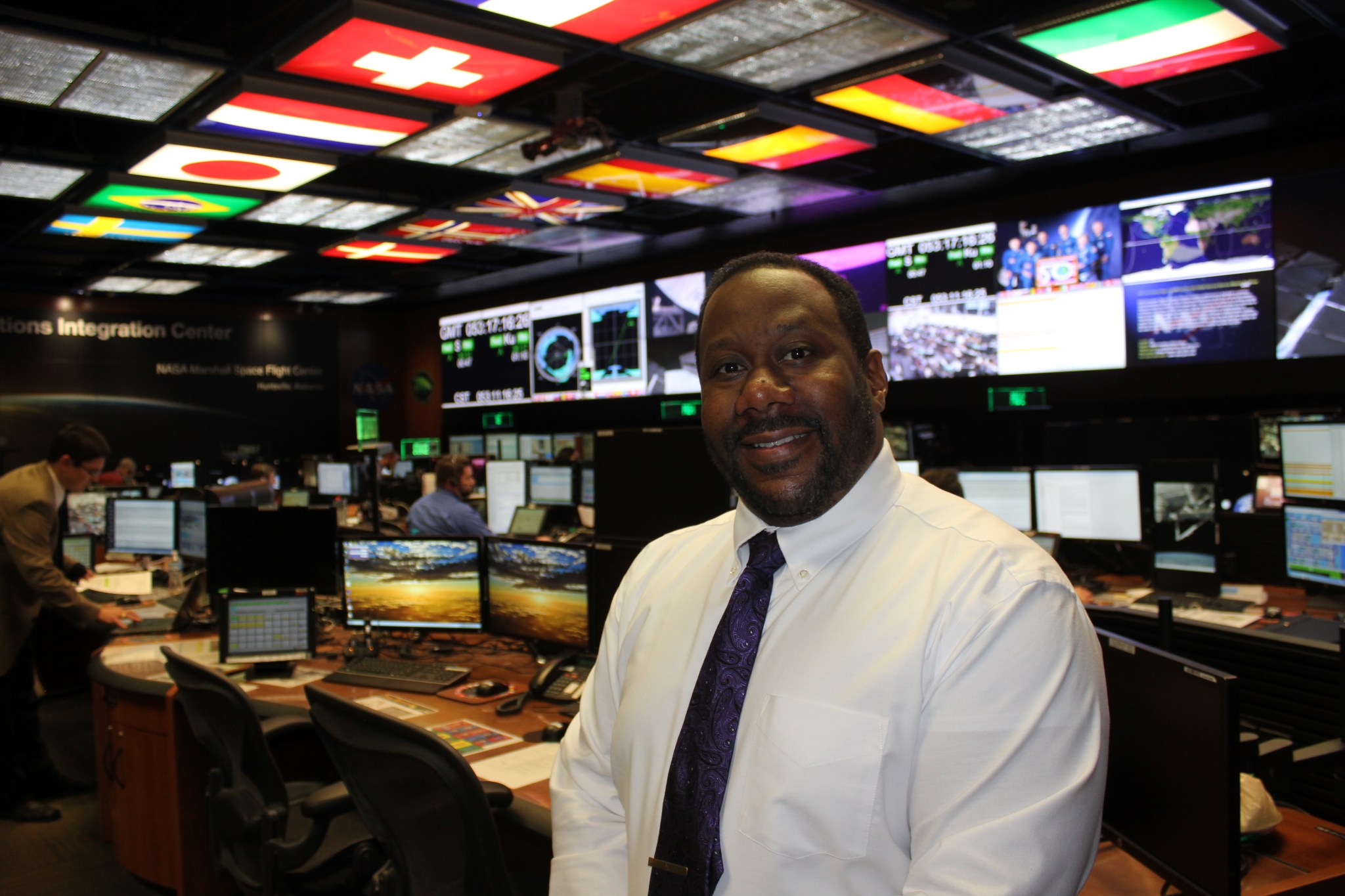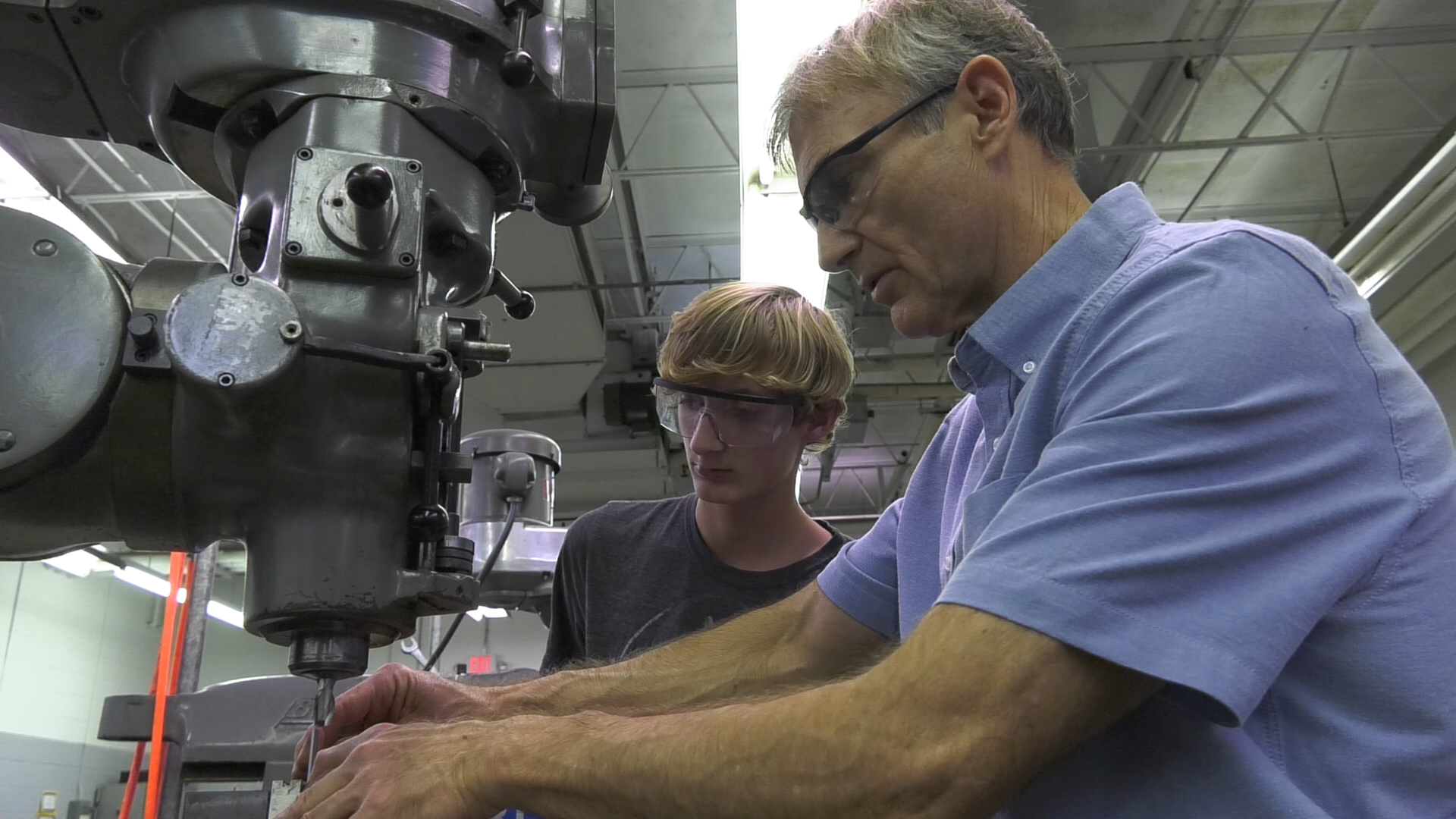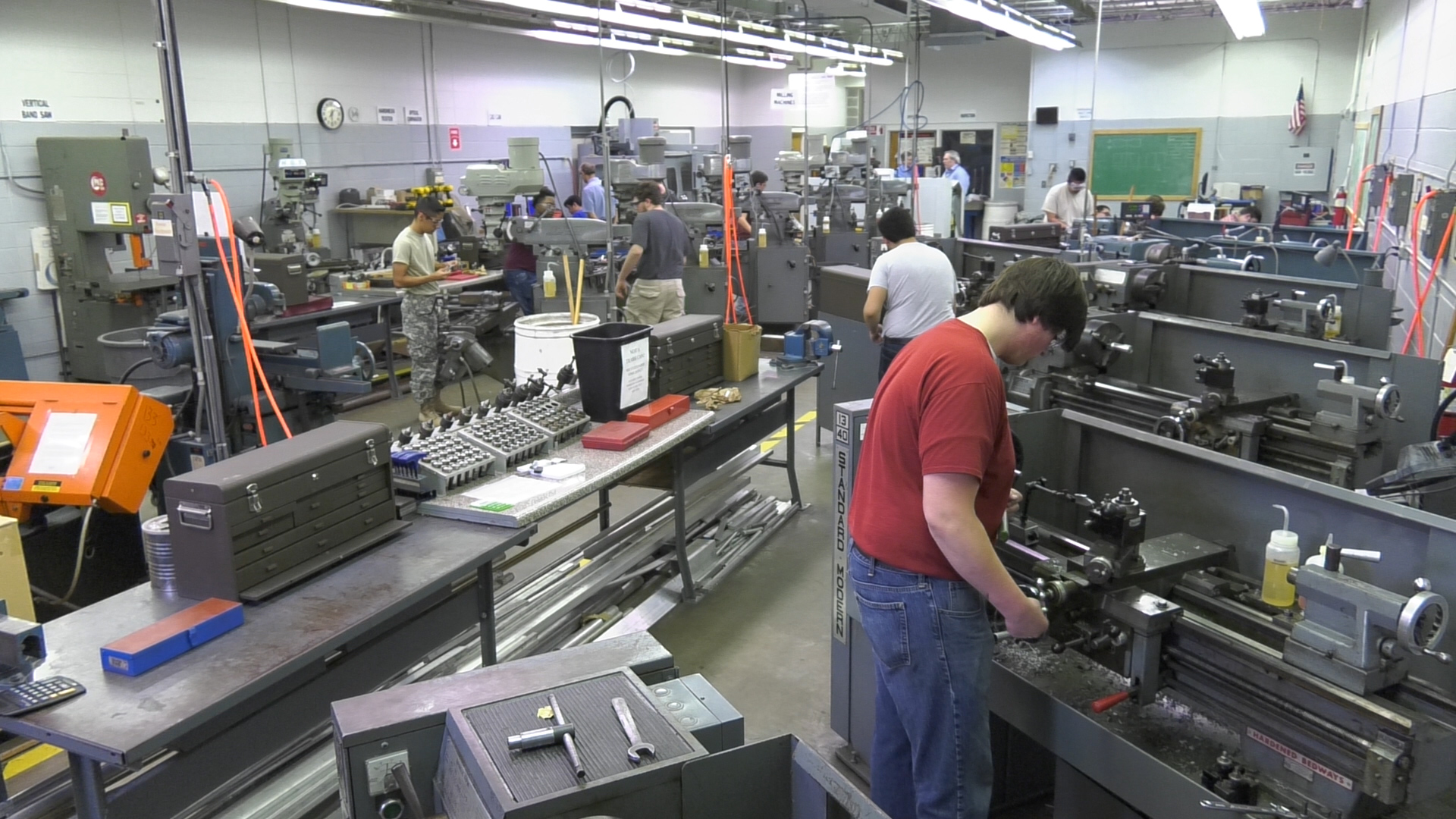In This Week’s Star
- They Love it When a Plan Comes Together: International Space Station Payload Planners
- NASA Releases Software Catalog, Granting the Public Free Access to Technologies for Earthly Applications
- Hearing ‘Hidden Figures’ Author Sparks Women’s History Month Discussion
- Aiming Higher: High School Students Build Flight Hardware Bound for Space
- Col. Rich Spiegel of U.S. Army Materiel Command Visits Marshall
- This Week in NASA History: Apollo 9 Returns to Earth — March 13, 1969
- Former Marshall Equal Opportunity Director Clyde Foster Dies
They Love it When a Plan Comes Together: International Space Station Payload Planners
By Lori Meggs
How many of us know what we’ll be doing exactly six months from now? Probably not many. But what if you had to plan your life six months in advance — down to the exact hour and minute? Now imagine having to plan it for someone else. That’s the precise job of a group of planners at NASA’s Marshall Space Flight Center.
The Payload Planning Team in NASA’s Payload Operations Integration Center at Marshall maps out each six-month science expedition to the International Space Station down to the minute, and they do it six months before the crew ever arrives. Each astronaut has his or her day planned out on a timeline to maximize the time needed for the hundreds of investigations in space. The team at Marshall sets aside the right amount of time to perform cutting-edge research that benefits life on Earth.
“We work with astronauts to accomplish science,” said Will Kirby, a member of the planning team. “We put together an OOS, or On Orbit Summary that includes compiling all the investigations our international partners from the Japan Aerospace Exploration Agency, European Space Agency and the Russian space agency, Roscosmos, are doing for those six months. We have to ensure they have enough time to properly perform an experiment, and coordinate the best time based on everyone’s priorities.”
The team collects requirements from the payload developers who design the experiments to see when the planners need to schedule each experiment based on when it needs to be installed, which astronaut is trained on it, and how many runs it will take to complete. This information is used to build an activity model that helps shape the planning timeline.
After the six-month plan is developed, the five-member team then takes a closer look week-by-week, starting two weeks before the planned experiment or activity, and makes any needed changes. This continues until the day the crew is set to perform the experiment or activity.
Sometimes, however, the best laid plans don’t always work out. That’s why a member of the team, called the timeline change officer, monitors minute-to-minute operations. If there’s not enough time or the experiment isn’t working right, they can move things on the timeline.
“In real-time operations, we learn to roll with the punches,” added Kirby. “And most of the time, we know we can pick it up tomorrow.”
When their plans come to fruition — there’s no greater feeling. “We love it when a plan comes together!” said Kirby. “Sometimes I will look up at one of the station cameras and see them doing an experiment I planned, and to know that I helped make that happen is so rewarding and cool.”
So the next time your day doesn’t go as planned, take a page from the payload planner’s playbook and be flexible. Besides, if you get stressed out, at least you can step outside for a breath of fresh air or to take a walk. That’s hard to do when you’re orbiting the planet at 17,500 miles an hour.
Meggs, an ASRC Federal/Analytical Services employee, supports the Office of Communications.
NASA Releases Software Catalog, Granting the Public Free Access to Technologies for Earthly Applications
NASA has released its 2017-2018 software catalog, which offers an extensive portfolio of software products for a wide variety of technical applications, all free of charge to the public, without any royalty or copyright fees.
Available in both hard copy and online, this third edition of the publication has contributions from all the agency’s centers on data processing/storage, business systems, operations, propulsion and aeronautics. It includes many of the tools NASA uses to explore space and broaden our understanding of the universe. A number of software packages are being presented for release for the first time. Each catalog entry is accompanied with a plain language description of what it does.
“The software catalog is our way of supporting the innovation economy by granting access to tools used by today’s top aerospace professionals to entrepreneurs, small businesses, academia and industry,” said Steve Jurczyk, associate administrator for NASA’s Space Technology Mission Directorate. “Access to these software codes has the potential to generate tangible benefits that create American jobs, earn revenue and save lives.”
NASA published the first edition of its software catalog in April 2014, becoming the first comprehensive listing of publicly available software to be compiled by a federal government agency — the largest creator of custom code. Since then, NASA has shared thousands of its software programs with students, industry, individuals and other government agencies.
“Software has been a critical component of each of NASA’s mission successes and scientific discoveries. In fact, more than 30 percent of all reported NASA innovations are software,” said Dan Lockney, NASA’s Technology Transfer program executive. “We’re pleased to transfer these tools to other sectors and excited at the prospect of seeing them implemented in new and creative ways.”
Some of the software available include codes for more advanced drones, and quieter aircraft. While access restrictions apply to some codes, NASA has automated and updated its software release process over the last two years to ensure that it is as quick, easy and straightforward as possible.
The software catalog is a product of NASA’s Technology Transfer program, managed for the agency by STMD. The program ensures technologies developed for missions in exploration and discovery are broadly available to the public, maximizing the benefit to the nation.
Hearing ‘Hidden Figures’ Author Sparks Women’s History Month Discussion
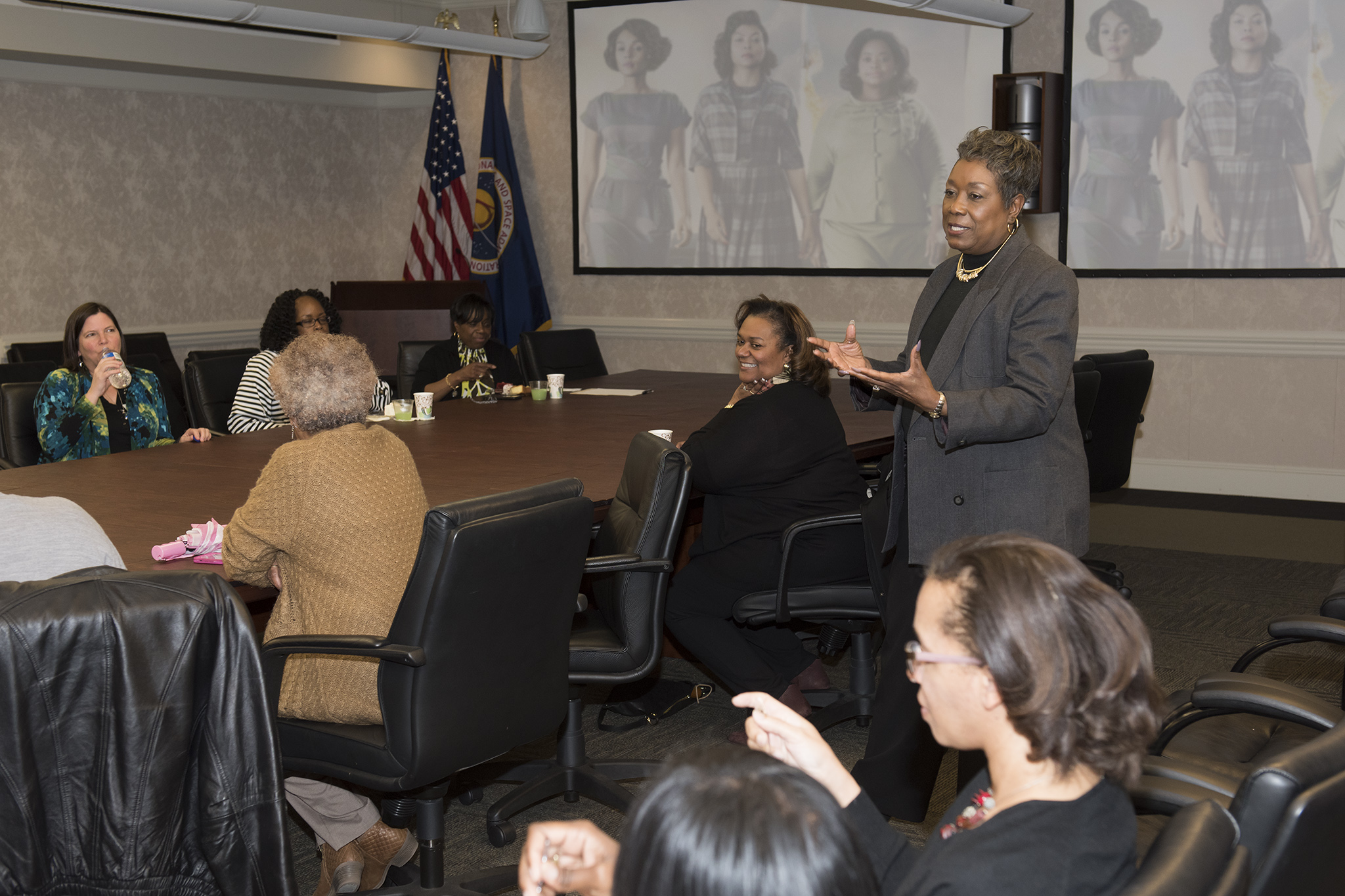
Diane Cain, standing near center, of NASA Marshall Space Flight Center’s Office of Human Capital, speaks to an audience gathered for an agency-wide Livestream presentation by author Margot Lee Shetterly from NASA’s Langley Research Center on March 7. Shetterly’s book “Hidden Figures,” adapted into a feature film by the same name, focuses on the stories of Katherine Johnson, Mary Jackson and Dorothy Vaughan, African-American women who were essential to the success of early spaceflight. Discussion and 1960s-era desserts and refreshments followed the Marshall viewing, which was organized by Marshall’s Office of Diversity and Equal Opportunity as part of Women’s History Month activities. The office strives to promote diversity, equality and inclusion for all individuals, while providing a workplace that is free from discrimination, including harassment and retaliation. (NASA/MSFC/Charles Beason)
Aiming Higher: High School Students Build Flight Hardware Bound for Space
By Bill Hubscher
Students at an Alabama high school have done so well in a NASA program that they are now making parts for use on the International Space Station.
For more than 50 years, NASA has sponsored programs to get students interested in the aerospace industry. One program, called HUNCH, or High Schools United with NASA to Create Hardware, challenges students to use machining, welding and other skills learned in class to build exact replicas of the hardware on the space station. These twin versions are added to full-sized models of the station on the ground. Astronauts and flight controllers use these mock-ups for ground training before a mission.
“We realized early in the station program that we needed a version on the ground before we flew in to space,” said Bob Zeek, HUNCH co-founder and program manager at NASA’s Marshall Space Flight Center. “At the same time, we wanted to get kids who are good at machining, welding or other technical skills involved with NASA. A four-year degree is good for some, but we need technical people, too. Machining, computer-aided-design drafting, welding, computer electronics — all the things we do in HUNCH are preparing these students for the future and helping the agency at the same time.”
HUNCH has been a part of the curriculum for the machine tool technology class at Austin High School in Decatur, Alabama, since 2010. Bill Gibson, the school’s machine tool technology instructor, is a fierce advocate for this kind of hands-on training.
“The first year of the program, we did a couple of simple designs for their training modules like locker panels and racks,” he said. “Every year, the students have gotten better, so we get more advanced and challenging designs.”
The program has brought students into his class who may not have initially considered machining as a career.
“It’s very rewarding for me and for these students,” Gibson said. “They are very enthusiastic and work very diligently on these projects. Motivation is not a problem. The thought of an astronaut putting their hands on the work they do in class really brings out their best.”
It was the consistent high quality of the work that made Zeek and the HUNCH program consider letting students take their talents to the next level. The students were challenged to build two items. One was a set of bolts that will hold lockers of scientific experiments in place on the space station. The other is a holder for a new brush cleaning tool for use during spacewalks. The tools were delivered to the space station on the recent SpaceX cargo resupply mission, which launched Feb. 19, and the bolts are already used on assembled lockers that will launch on a future resupply mission.
“We use high-tech tools in our shop here. We’ve made things for NASA before, but this was a big step,” said Ryan Anthony, a senior at Austin High School. “I was nervous when I found out we would use hardened stainless steel. That’s when I knew this would be completely different learning experience for all of us.”
“It’s amazing,” he said, as a smile spread across his face. “Not only are we making parts that will go to space, but these are parts that we built, as high school students, that will help astronauts do their job.”
The next-level experience not only included manufacturing unique pieces of hardware, but also learning to use new high-tech tools, creating computer-aided design drawings and dealing with extreme precision.
The small parts students are making are big steps in training the workforce that will help design and build the space-faring vehicles of tomorrow.
“I like seeing the light bulbs go on and watch students make that connection,” said Zeek. “It’s fulfilling to see them succeed.”
Hubscher, an ASRC Federal/Analytical Services employee, supports the Office of Communications.
Col. Rich Spiegel of U.S. Army Materiel Command Visits Marshall
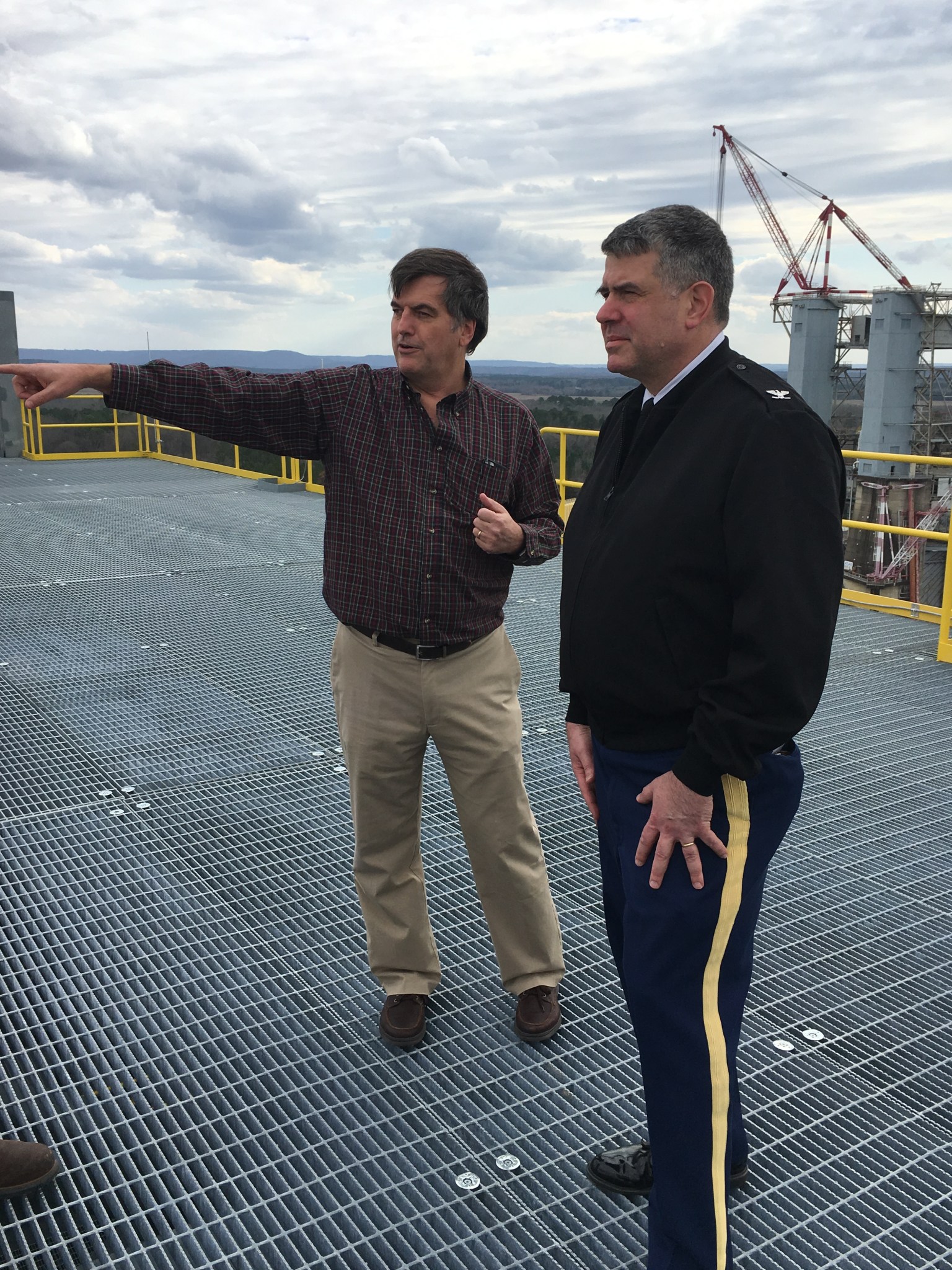
Col. Rich Spiegel, right, director of the U.S. Army Materiel Command‘s Office of Public and Congressional Affairs, looks out across NASA’s Marshall Space Flight Center from atop Test Stand 4693 on March 6, with Marshall’s Sam Stephens, an engineer in the Space Launch System Stages Office. Like Redstone Arsenal Garrison Commander Col. Thomas Holliday, who toured Marshall the previous week, Spiegel visited a number of high-profile Marshall facilities, including the International Space Station Payload Operations Integration Center; ISS Environmental Controls and Life Support Systems research and development labs; and the Exploration Gallery, where exhibits, models and artwork detail present and future Marshall programs and flight missions crucial to the U.S. space program. Headquartered on Redstone Arsenal, the Army Materiel Command’s Office of Public and Congressional Affairs liaises with industry and government partners, including NASA, to share information and capabilities critical to American interests on Earth and beyond it. As part of Team Redstone, Marshall regularly partners with its military and federal counterparts on the arsenal and around the nation to maintain America’s technological leadership and further NASA’s mission of exploration and discovery. (NASA/MSFC/Jennifer Stanfield)
This Week in NASA History: Apollo 9 Returns to Earth — March 13, 1969
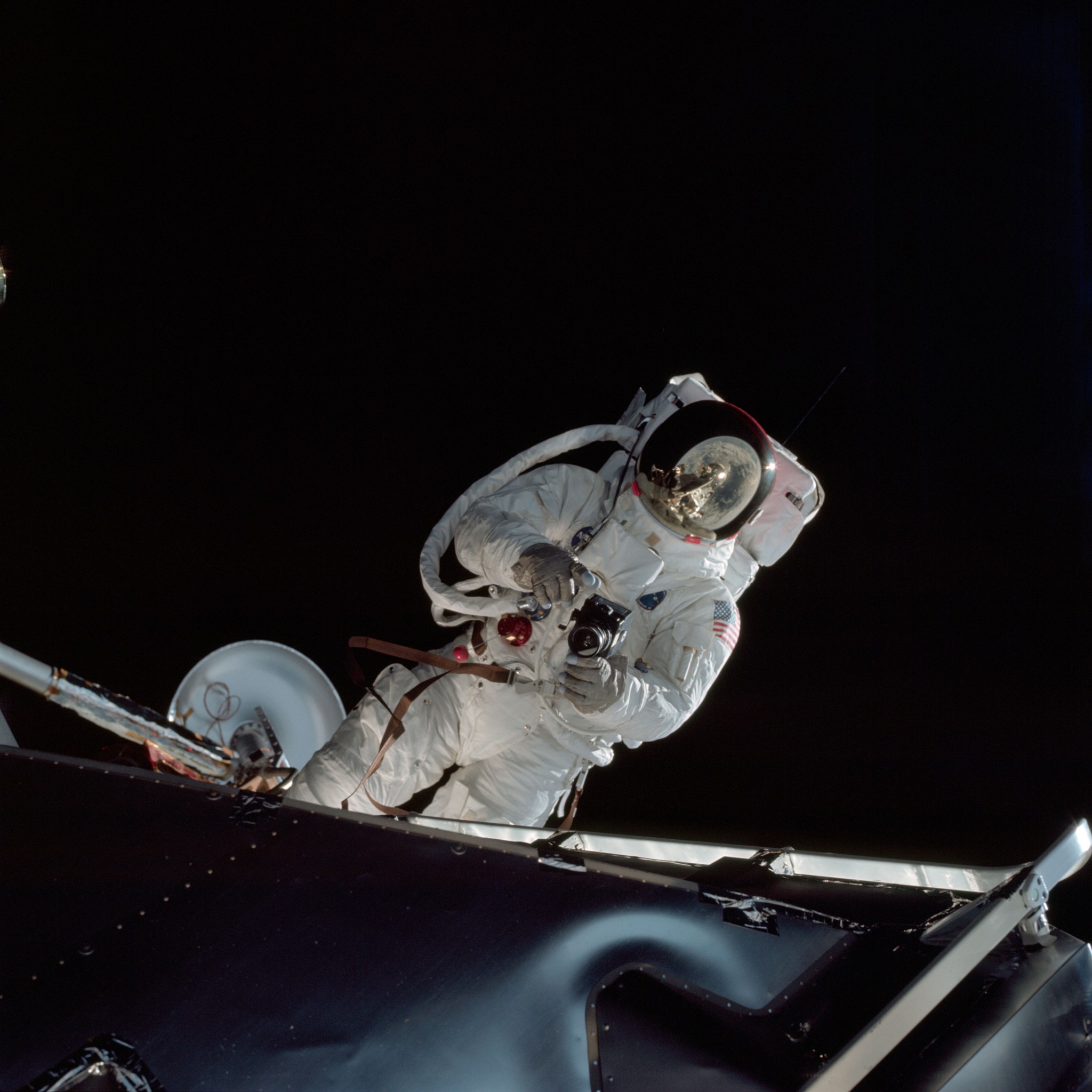
This week in 1969, the Apollo 9 crew splashed down after a 10-day mission. Here, astronaut Russell L. Schweickart performs a spacewalk on the fourth day of the Earth–orbital mission. The Apollo 9 spacecraft, in the lunar mission configuration, was tested in Earth orbit. The mission was designed to rehearse all the steps and reproduce all the events of the Apollo 11 mission with the exception of the lunar touchdown, stay and liftoff. The Command and Service Module, and the Lunar Module were used in flight procedures identical to those that would later take similar vehicles to the moon. NASA‘s Marshall Space Flight Center designed, developed and managed the production of the Saturn V rocket that took astronauts to the moon. Today, Marshall is developing NASA‘s Space Launch System, the most powerful rocket ever built that will be capable of sending astronauts deeper into space than ever before, including to an asteroid and Mars. The NASA History Program is responsible for generating, disseminating, and preserving NASA’s remarkable history and providing a comprehensive understanding of the institutional, cultural, social, political, economic, technological, and scientific aspects of NASA’s activities in aeronautics and space. For more pictures like this, and to connect to NASA’s history, visit the History Program’s webpage. (NASA)
Former Marshall Equal Opportunity Director Clyde Foster Dies
Clyde Foster, 85, former director of the Equal Opportunity Office at NASA’s Marshall Space Flight Center, died March 6.
The Birmingham, Alabama, native earned his bachelor’s degree in mathematics and chemistry from Alabama A&M University in Normal, Alabama, in 1954. After college, he worked for the Dallas County school system near Selma, Alabama, from 1956 to 1957, then joined the Army Ballistic Missile Agency at Redstone Arsenal as a mathematician technician. When Marshall was established on July 1, 1960, Foster transferred to the new organization.
He was elected mayor of Triana, Alabama, in 1964, and held that position until 1984. From 1968 to 1970, he also worked at Alabama A&M as director of the Computer Science Department. At Marshall, Foster worked as a mathematician and instructor until 1972, when he joined the center’s new Equal Opportunity Office. In 1975, he was first appointed deputy director and then director of that organization. He retired from NASA in 1987.
Among numerous government and civic honors, Foster was awarded NASA’s Apollo Achievement Award in 1969 for his contributions to the agency’s mission to land Apollo 11 on the moon in July 1969. He was president of the National Technical Association, the oldest African-American technology organization in the United States, from 1982 to 1983. In May 2000, he was inducted into Alabama A&M’s Alumni Hall of Fame.
Foster is survived by his wife, Dorothy Foster, and five children, five grandchildren, seven great-grandchildren and one great-great grandchild.







